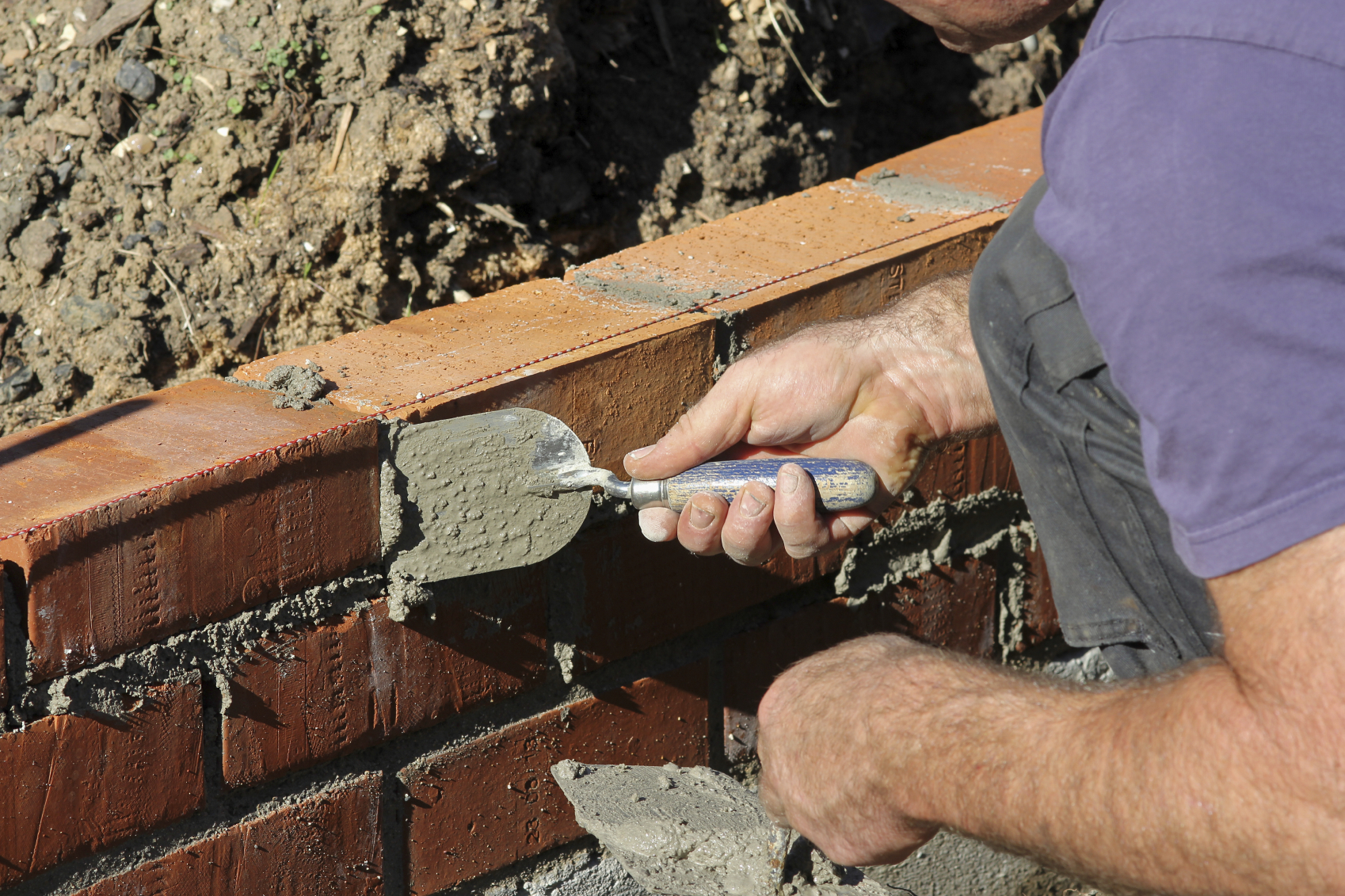Bricklayer Auckland Fundamentals Explained
Wiki Article
Some Of Bricklayer Auckland
Table of ContentsThe 5-Minute Rule for Bricklayer AucklandFacts About Bricklayer Auckland UncoveredExcitement About Bricklayer AucklandGet This Report about Bricklayer AucklandGet This Report on Bricklayer AucklandExcitement About Bricklayer Auckland
Bricks should always be stacked on slabs; never load them straight on uneven or soft ground. Do not save bricks on scaffolds or runways.Other than where stacked in sheds, brick piles ought to never be more than 7 feet high. When a stack of block reaches a height of 4 feet, it has to be tapered back 1 inch in every foot of height above the 4-foot level. The tops of block heaps should be maintained level, as well as the taper should be preserved during unpiling operations.
Structural bond refers to just how the private masonry units interlock or link with each other right into a solitary structural device. Utilizing cement to stick adjacent wythes of masonry.
The Bricklayer Auckland Ideas
Pattern bond refers to the pattern developed by the masonry devices as well as mortar joints on the face of a wall (Bricklayer Auckland). The pattern may result from the architectural bond, or it may be purely ornamental and unrelated to the architectural bond. Figure 4-4 reveals the 6 standard pattern bonds alike usage today.The running bond is the easiest of the 6 patterns, containing all stretchers. Due to the fact that the bond has no headers, metal ties typically form the architectural bond. The running bond is made use of greatly in cavity wall building and construction, brick veneer wall surfaces, and also dealing with tile wall surfaces made with additional vast cot floor tile.
Tests to discover the high quality of blocks have been researched in the previous article. Great blocks must not disintegrate when positioned in water. This is really important as when these bricks are utilized with concrete mortar, we ought to extensively soak them prior to laying. Only when fat lime or clay mortar is utilized or when one is compelled to make use of blocks that are not well scorched, this saturating policy has to be relaxed.
The Best Guide To Bricklayer Auckland
In all instances, blocks should not be dealt with in baskets or in any other mode which will destroy the intensity of their edges. A layer of mortar is spread out to cover the complete width of the wall surface for an ideal length of the reduced program.
We press the side bulging mortar in strongly to be degree with the face of the wall if it is to be left unplastered. In the usual method embraced by several masons, a row of blocks is initial put on a slim layer of bed mortar leaving the cross joints empty.


Strictly this is not an excellent technique. (Nevertheless, when making use of concrete mortar of high toughness, the loss of toughness as a result of offense of these rules may be only limited.)The walls are elevated absolutely plumb. All courses are laid really straight as well as all upright joints genuinely upright. Upright joints in alternative courses ought to come directly, one over the other.
The Main Principles Of Bricklayer Auckland
For this function, a wooden straight side with college graduation offering a thickness of each brick program including joint can be made use of for support. For a thick wall surface, the above procedure is duplicated together with both faces of the wall surface as well as the interior loading bricks for the thick wall surface are stocked a similar fashion.
This procedure of filling up open joints is described flushing-up. It is wrongly omitted for several programs on some badly-executed tasks and only done later on (not after every program) in an ineffective fashion. It is not an excellent technique and needs to be prevented as it is vital that every course should be purged up to the degree if excellent job is required.

8 Easy Facts About Bricklayer Auckland Described
The mortar straight from the source increasing as well as loading the vertical joints completely and also develops an extremely strong and also strong wall surface. This is referred to as larrying. For a rat trap bond job (as in the building of dental caries wall surfaces), if the mortar is positioned thoughtlessly on the block, some of it will come under the tooth cavities and also will be squandered.The face of the brickwork will likewise be cleaned of all mortar droppings, etc(ii) When situations make it needed to continue a portion of a building in irregular training courses, the job will be developed back (according to the bond utilized on the job) at an angle not steeper than 45 degrees so as to make sure an attire and also effective bonding.
Or else, for faces to be smudged, completing of the face joints must be performed as reviewed in listed below (This is very important.)(iv) The walls should be uniformly elevated all over not leaving any part one metre (3 feet) lower than the other - Bricklayer Auckland. A day's work should not be even more than 1.
The Bricklayer Auckland Diaries
When the facework is to be later plastered or the joints alone are to be pointed, the joints should be raked while the wall is being constructed. Bricklayer Auckland. It should be raked to a minimal deepness of 12 mm by a raking device during the progress of the work itself, when the mortar is still green.
If gluing or pointing is not imagined, the joints must be struck flush as well as finished at the time of laying itself, as currently specified. Half-brick wall go to this web-site surfaces tend to crack unless treatment is absorbed its building and construction. Brickwork in half-brick masonry is to be performed with cots in 1: 5 mortar.
Report this wiki page